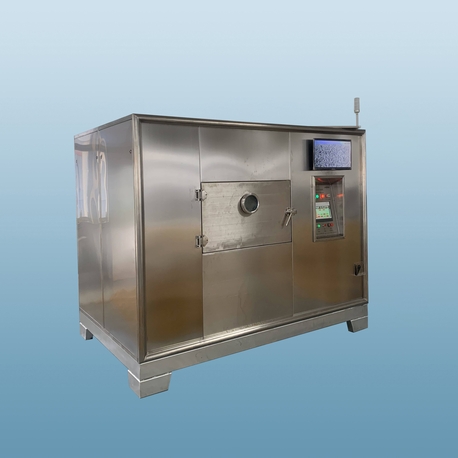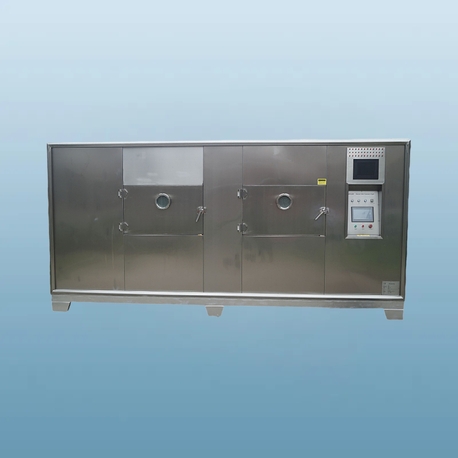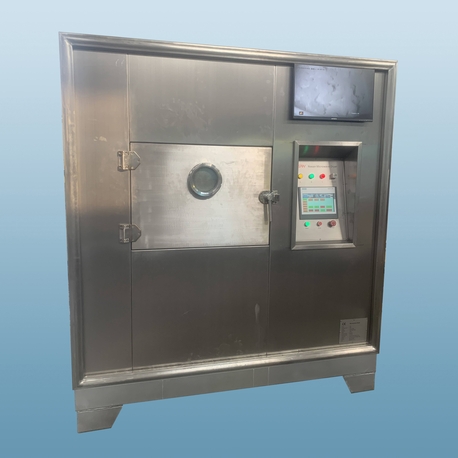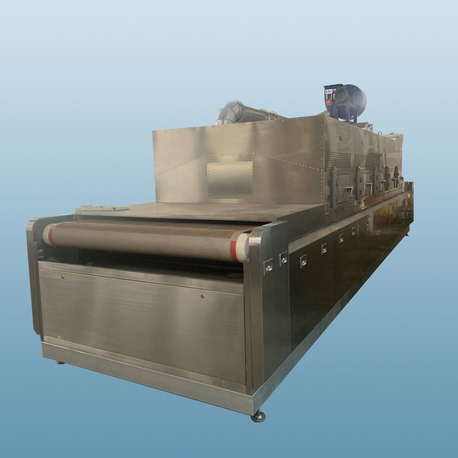In the world of industrial processing, efficiency, speed, and cost-control are paramount. For decades, conventional drying methods like hot air ovens and rotary dryers have been the standard. However, a powerful and innovative technology has been steadily transforming production lines: the industrial microwave. This isn't your average kitchen appliance; it's a sophisticated system designed for heavy-duty applications, offering unparalleled advantages in drying, curing, and heating processes. Brands like Nasan have been at the forefront, engineering robust industrial microwave systems that deliver tangible results for businesses worldwide.

What Exactly is an Industrial Microwave Dryer?
At its core, an industrial microwave system operates on the same basic principle as a domestic one—using electromagnetic radiation to agitate water molecules, generating heat from within the material. The difference lies in the scale, power, and precision. An industrial microwave dryer is a continuous or batch system with magnetrons generating significantly higher power, often in the tens or hundreds of kilowatts. It's engineered with advanced waveguides for even energy distribution, temperature and moisture sensors for process control, and a conveyor belt or turntable for automated material handling. This makes it ideal for everything from drying ceramics to curing resins in the composites industry.
The Core Advantage: How Industrial Microwave Technology Works
Understanding the mechanism is key to appreciating its benefits. Conventional drying works by conduction, heating the outside of a material and waiting for the heat to travel inward. This is often slow and can create a hard, dry shell with a wet core—a phenomenon known as case-hardening.
An industrial microwave, however, uses volumetric heating. The microwaves penetrate the material and excite water molecules throughout its entire volume simultaneously. This means:
Heat is generated from the inside out. There is no waiting for heat to transfer from the surface.
The drying process is dramatically accelerated.
Selective Heating: Microwaves are preferentially absorbed by water molecules. This means energy is directed precisely where it's needed most—into the moisture—rather than heating the entire bulk of the material or the surrounding air.
7 Key Benefits of Switching to an Industrial Microwave System
Here’s a breakdown of why manufacturers are making the switch to this advanced drying technology.
1. Unmatched Drying Speed and Increased Throughput
The most significant benefit is the drastic reduction in processing time. What takes hours in a conventional oven can often be accomplished in minutes with an industrial microwave dryer. This directly translates to higher production volumes and the ability to meet tighter deadlines without expanding your physical footprint.
2. Superior Energy Efficiency and Lower Operating Costs
Because industrial microwave systems heat the material directly and not the surrounding air or the chamber walls, they are incredibly energy-efficient. Much less energy is wasted, leading to lower utility bills. The rapid processing time also means the equipment runs for shorter durations, further conserving energy.
3. Enhanced Product Quality and Uniformity
The issue of case-hardening is virtually eliminated. Since moisture is driven from the inside out, the drying is more uniform, preserving the material's structural integrity, texture, and desired properties. This is critical in industries like food processing (maintaining flavor and nutrients) and advanced ceramics (preventing cracks and defects).
4. Precise Process Control
Modern industrial microwave systems from reputable manufacturers come with integrated control panels. Operators can precisely set power levels, exposure time, and temperature, ensuring batch-to-batch consistency. This level of control is difficult to achieve with traditional methods.
5. Significant Space Savings
The high efficiency of microwave drying often means a physically smaller machine can replace a large, lengthy conveyor oven or a multi-stage drying line. This frees up valuable floor space for other production activities.
6. A Greener, More Sustainable Solution
With lower energy consumption, the carbon footprint of your drying process is reduced. Furthermore, because the process is so efficient and controlled, there is less product waste due to overheating or uneven drying, contributing to more sustainable manufacturing practices.
7. Versatility Across Multiple Industries
The application of industrial microwave technology is remarkably broad. It’s not a niche solution but a flexible one adaptable to various materials and sectors.
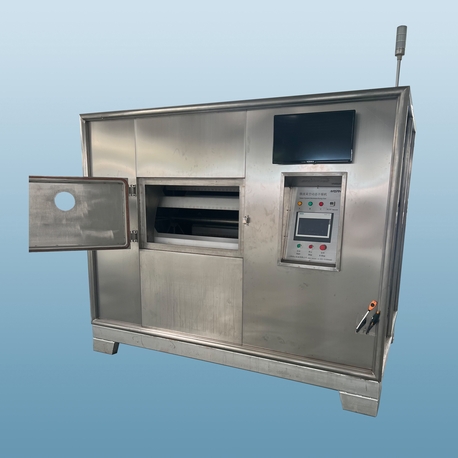
Where are Industrial Microwave Dryers Used? Key Applications
The versatility of this technology is one of its strongest selling points. Here are some of the primary fields where industrial microwave systems are making a difference:
Food Processing: Drying fruits, vegetables, and herbs while preserving color and vitamins; pasteurization; tempering frozen foods.
Pharmaceuticals: Rapid drying of granules and powders; moisture removal from active pharmaceutical ingredients (APIs).
Chemicals and Minerals: Drying of catalysts, pigments, and various chemical powders; calcination of ceramics.
Textiles: Drying of dyed or finished fabrics without damaging the fibers.
Wood and Paper: Curing coatings and adhesives; drying lumber.
Rubber and Composites: Pre-heating rubber compounds; curing composite materials.
Companies like Nasan have developed specialized expertise in tailoring their industrial microwave solutions to meet the unique challenges of these diverse sectors, ensuring optimal performance for each specific application.
Making the Right Choice: Partnering with a Specialist
Investing in an industrial microwave system is a significant decision. The key to success lies in partnering with an experienced manufacturer who can provide more than just hardware. Look for a provider that offers comprehensive services, including:
Process Development and Testing: The ability to test your specific material in their lab.
Custom Engineering: Designing a system that fits your production line and process requirements.
Robust After-Sales Support: Reliable technical support, maintenance services, and spare parts availability.
As a trusted name in the field, Nasan exemplifies this approach, working closely with clients to ensure their industrial microwave integration is seamless and successful, delivering a strong return on investment.
The industrial microwave is no longer a technology of the future; it is a practical, powerful, and profitable solution for today's industrial drying and heating challenges. By offering unparalleled speed, efficiency, and quality control, it empowers manufacturers to optimize their operations, reduce costs, and produce superior products. As industries continue to seek out competitive advantages, the adoption of advanced industrial microwave dryer technology is set to become the new standard.
Frequently Asked Questions (FAQs) About Industrial Microwave Systems
Q1: Is industrial microwave drying safe?
A1: Yes, when properly engineered and operated, industrial microwave systems are extremely safe. They are built with multiple safety interlocks and shielding to prevent any microwave leakage, ensuring a safe working environment for personnel. They comply with all international safety standards for radiation emission.
Q2: Can an industrial microwave dryer handle all types of materials?
A2: Not all materials are suitable for microwave drying. Materials with very low moisture content or those that contain metals are generally not good candidates. The best way to determine suitability is through a laboratory test with a potential supplier, such as Nasan, who can analyze your specific material's response to microwave energy.
Q3: How does the cost of an industrial microwave system compare to a traditional dryer?
A3: The initial capital investment for an industrial microwave system can be higher than for a conventional dryer. However, the total cost of ownership is often lower due to significant savings in energy consumption, reduced processing time, lower maintenance, and decreased floor space requirements. The return on investment is typically realized through these operational efficiencies.
Q4: What kind of maintenance do these systems require?
A4: The primary maintenance component for an industrial microwave dryer is the magnetron, which has a finite lifespan. However, high-quality systems are designed for easy magnetron replacement. Other routine maintenance includes cleaning and checking the waveguide system. Reputable manufacturers provide clear maintenance schedules and support.
Q5: Are there limitations on the moisture content of the material being processed?
A5: Industrial microwave technology is highly effective for removing free (unbound) moisture. Its efficiency can decrease as the material's moisture content drops to very low levels (e.g., below 5%), where bound moisture requires more energy to remove. In such cases, a hybrid system combining microwave and conventional drying might be the most efficient solution.


